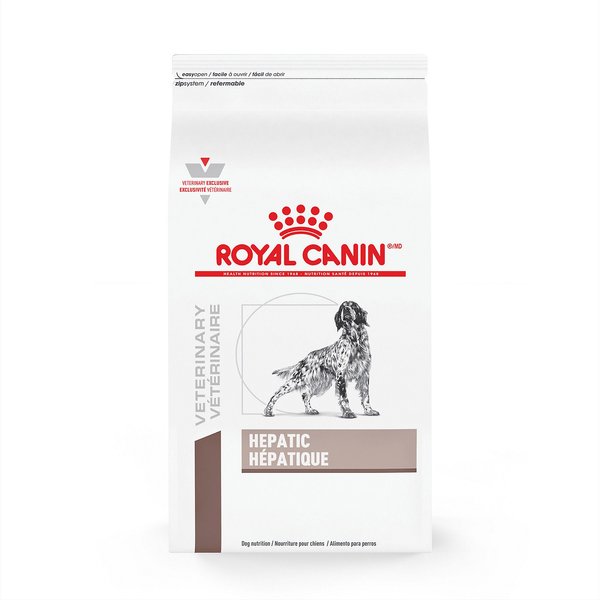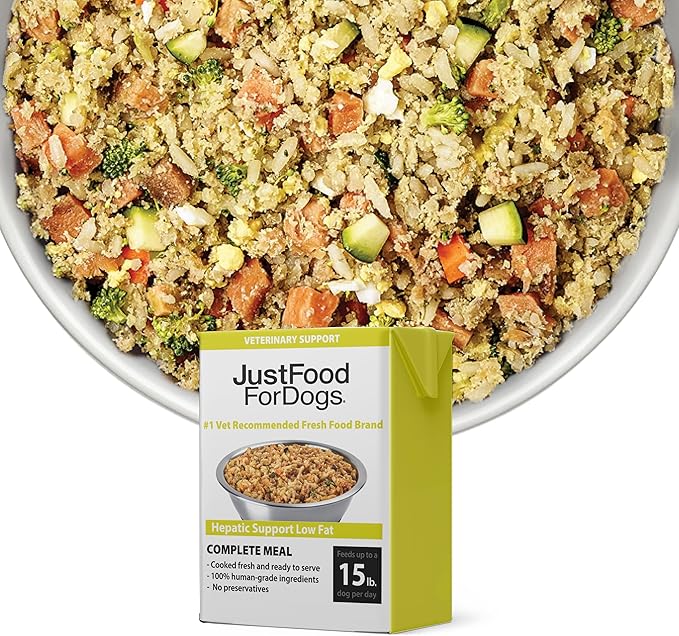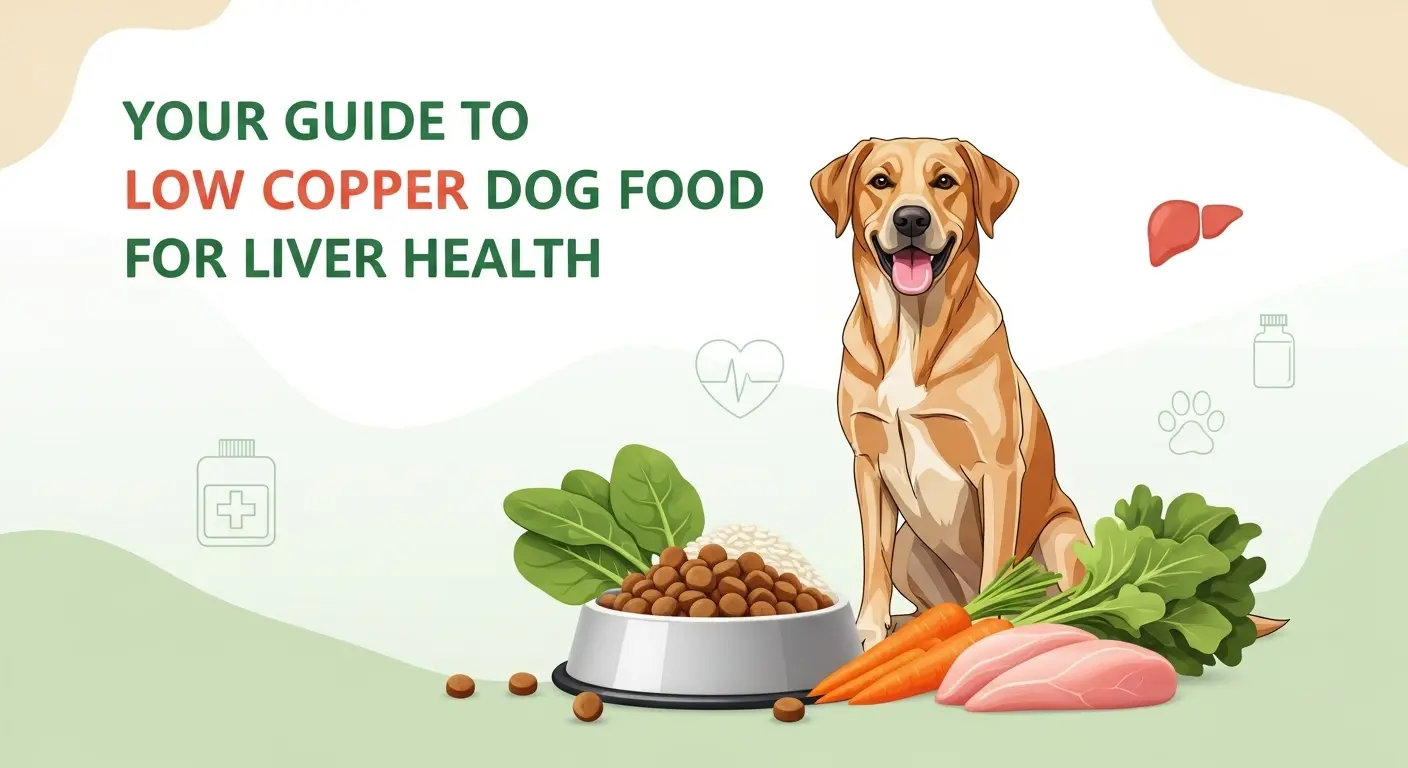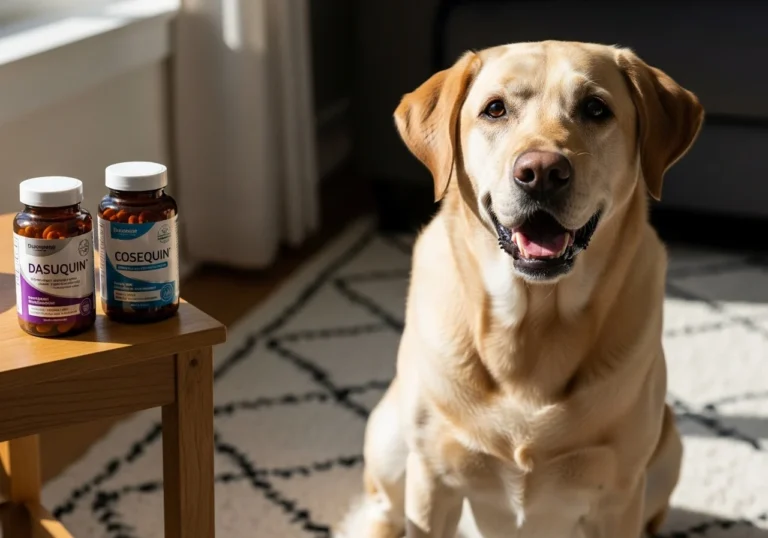That sinking feeling in your stomach after the vet delivers difficult news is something no pet parent ever wants to experience. Maybe it was a routine blood test that came back with elevated liver enzymes, or perhaps your dog has been lethargic and unwell, leading to a diagnosis of copper storage disease or another liver condition. Suddenly, you’re faced with a new, confusing world of medical terms and dietary restrictions. You’re not alone. Chronic liver disease is one of the top five causes of non-accidental death in dogs, and diet plays a critical role in managing it.
Hearing that your dog’s food could be part of the problem is overwhelming. But it also means you have the power to be part of the solution. This guide is here to walk you through it. We’ll explore what low copper dog food is, why it’s essential for certain dogs, and how to choose the right one for your best friend. From deciphering labels to vet-approved recommendations, you’ll find the clear, actionable information you need to make the best decision for your dog’s health.
What is low copper dog food?
Low copper dog food is a specialized diet formulated with a restricted amount of copper, an essential mineral that can accumulate to toxic levels in dogs with certain genetic predispositions or liver disease. This therapeutic diet helps reduce the liver’s workload, prevent further damage, and manage conditions like copper storage hepatopathy. It is typically recommended by a veterinarian.
Understanding the Role of Copper in Your Dog’s Diet
Navigating your dog’s nutritional needs can feel complex, especially when dealing with a health diagnosis. Understanding the fundamentals of a low copper diet for dogs is the first step toward taking control and supporting their well-being.
Foundation: What Is Low Copper Dog Food?
At its core, low copper dog food is a diet formulated with carefully controlled levels of copper. Copper is an essential trace mineral required for functions like red blood cell formation, bone development, and nerve function. However, for some dogs, the body cannot process copper correctly, leading it to build up in the liver and cause severe, progressive damage—a condition known as copper storage hepatopathy.
The Association of American Feed Control Officials (AAFCO) sets minimum copper requirements for healthy adult dogs at 7.3 mg/kg on a dry matter basis. There is no established maximum, as most dogs can excrete excess copper without issue. Therapeutic low copper diets, however, contain significantly less than this amount, often falling below 5 mg/kg. It’s crucial to understand that “grain-free” or “natural” does not automatically mean low copper. Many premium, grain-free foods use ingredients like liver, lamb, and shellfish, which are naturally high in copper.
A Note on Our Research: As dedicated pet parents ourselves, we’ve spent countless hours researching nutritional science and consulting with veterinarians to understand this topic. This guide combines that deep research with hands-on experience in managing canine dietary needs.
Deep Dive: How to Choose the Right Food
When selecting a food to manage your dog’s liver health, every detail matters. The choice between a veterinary prescription diet and an over-the-counter (OTC) option is one of the most significant.
- Prescription Low Copper Dog Food: These diets are formulated specifically for medical conditions and are available only through a vet. They offer the tightest control over copper levels and often include other liver-supportive nutrients like zinc (which helps block copper absorption), antioxidants, and highly digestible proteins.
- Over-the-Counter Options: Finding a suitable OTC natural low copper dog food is more challenging. It requires diligent label reading and contacting manufacturers to get exact copper content, often measured in parts per million (ppm) or mg/kg.
How to Evaluate a Food Label:
- Check the Ingredient List: Avoid ingredients known to be high in copper, such as organ meats (especially liver), lamb, duck, salmon, and legumes like chickpeas and lentils. Instead, look for protein sources like chicken, turkey, beef, and whitefish.
- Look for Copper Levels: The guaranteed analysis on the bag may not list copper content. You will likely need to visit the brand’s website or contact their customer service to get the “as fed” or “dry matter basis” copper analysis. For a dog needing copper restriction, veterinarians often recommend diets with less than 10-15 ppm of copper on a dry matter basis.
- Assess Other Nutrients: Look for added zinc, vitamin E, and other antioxidants that support liver function. Protein quality is also key; it should be highly digestible to reduce the strain on the liver.
Real-World Application: Transitioning and Feeding Tips
Once you and your vet have chosen the right food, the next step is a safe and gradual transition. Switching food too quickly can cause digestive upset like vomiting or diarrhea, which is the last thing a dog with a compromised liver needs.
Step-by-Step Transition Guide:
- Days 1-3: Mix 25% new food with 75% old food.
- Days 4-6: Mix 50% new food with 50% old food.
- Days 7-9: Mix 75% new food with 25% old food.
- Day 10: Feed 100% new food.
Monitor your dog closely during this period. If you notice any digestive issues, slow the transition down.
Common Mistakes to Avoid:
- Adding High-Copper Toppers: Don’t sabotage the diet by adding treats, table scraps, or food toppers high in copper. This includes many popular dog treats and dental chews.
- Ignoring Water Source: In rare cases, well water can have high copper levels. If your dog’s condition isn’t improving, consider having your water tested or switching to filtered water.
- Forgetting Supplements: Always discuss any supplements with your vet. Some can contain hidden sources of copper. For more information, check out our guide on [LINK TO RELATED BLOG: SAFE SUPPLEMENTS FOR DOGS WITH LIVER DISEASE].
Top 3 Low Copper Dog Foods for 2025
After extensive research into nutritional profiles, brand transparency, and consultations with veterinary professionals, we’ve identified the top food options for dogs requiring a copper-restricted diet. Our goal is to provide clear, reliable choices to simplify your decision.
Disclaimer: This section contains affiliate links. If you make a purchase through these links, we may earn a small commission at no extra cost to you. This helps us continue to provide valuable content. We only recommend products we genuinely believe in, and your dog’s health is always our top priority. Always consult your veterinarian before changing your dog’s diet.
Our Selection Criteria
We didn’t just pick these foods at random. Each one was evaluated based on:
- Strict Copper Control: The primary factor was a confirmed low copper content, suitable for dogs with liver disease. We contacted manufacturers directly to verify these levels.
- Veterinarian Input: We prioritized prescription diets and OTC options that veterinarians frequently recommend for managing copper-related health issues.
- Ingredient Quality & Formulation: Foods were assessed for high-quality, digestible proteins, added liver-supportive nutrients (like zinc and antioxidants), and an overall balanced formula.
- Brand Reputation: We chose brands known for their rigorous quality control and nutritional research.
Top 3 Product Recommendations
1. Hill’s Prescription Diet l/d Liver Care
This is often the gold standard for dog food for liver disease and is a top recommendation from veterinarians for managing copper storage hepatopathy.
- Key Features & Benefits: Formulated by nutritionists and veterinarians, this food has highly controlled levels of copper to minimize accumulation in the liver. It’s made with highly digestible protein, carbohydrates, and fats to reduce the liver’s metabolic workload. It also includes a clinically proven antioxidant blend to support a healthy immune system.
- Best For: Dogs with a confirmed diagnosis of liver disease or copper storage hepatopathy. It’s a premium therapeutic diet for critical care.
- Pros & Cons:
- Pros: Clinically tested and proven effective, precisely controlled nutrient levels, highly recommended by vets.
- Cons: Requires a veterinary prescription, higher price point, some dogs may dislike the taste.
- Price/Value: Premium price, but offers unparalleled therapeutic value for dogs in need of serious dietary intervention.
2. Royal Canin Veterinary Diet Hepatic

Another top-tier prescription low copper dog food, Royal Canin’s Hepatic formula is designed to support the liver function of dogs with chronic liver insufficiency.
- Key Features & Benefits: This formula features a very low copper content combined with a high zinc level to help reduce copper accumulation. It contains a precise blend of antioxidants to help neutralize free radicals. The vegetable protein (soy protein isolate) is highly digestible, reducing the burden on the liver.
- Best For: Dogs needing long-term liver support, especially those who may be sensitive to animal-based proteins.
- Pros & Cons:
- Pros: Specifically formulated for liver disease, uses highly digestible vegetable protein, high in zinc.
- Cons: Also requires a vet prescription, can be expensive, soy protein may not be suitable for all dogs.
- Price/Value: A high-value prescription diet. Its targeted formulation justifies the cost for dogs with specific hepatic needs.
3. JustFoodForDogs Vet Support Diet Hepatic Support

For owners seeking a fresh, whole-food option, this veterinary-prescribed diet offers a unique approach.
- Key Features & Benefits: Made with whole-food ingredients like long-grain white rice, cod, sweet potatoes, and eggs. It is intentionally low in copper and phosphorus and supplemented with zinc. As a fresh food, it’s highly palatable, which is great for picky eaters or dogs with decreased appetite due to illness.
- Best For: Picky dogs or pet owners who prefer a fresh, minimally processed diet for their dog’s therapeutic needs.
- Pros & Cons:
- Pros: Human-grade ingredients, extremely palatable, no artificial preservatives, proven effective in feeding trials.
- Cons: Requires a prescription, has a short shelf life and requires refrigeration/freezing, highest price point of the three.
- Price/Value: This is a premium-plus option. The cost is significant, but for dogs who refuse other diets, the value is immense.
Comparison Summary
| Feature | Hill’s l/d Liver Care | Royal Canin Hepatic | JustFoodForDogs Hepatic |
| Diet Type | Dry Kibble & Canned | Dry Kibble & Canned | Fresh Frozen |
| Copper Level | Very Low | Very Low | Very Low |
| Protein Source | Chicken, Pork | Soy Isolate | Cod, Eggs |
| Prescription? | Yes | Yes | Yes |
| Best For | Overall Clinical Use | Vegetable Protein Needs | Picky Eaters |
| Verdict | Best Overall | Best for Sensitivities | Best Premium |
Ultimately, the best copper storage hepatopathy dog food is the one your veterinarian recommends and your dog will eat consistently.
You may also like: Dasuquin vs Cosequin: Which Is Best for Your Dog’s Joints?
Advanced Tips & Expert Insights
Managing a dog with liver issues goes beyond just the food bowl. It requires a holistic view of their health, with insights from trusted sources.
As the American Kennel Club (AKC) notes, certain breeds have a genetic predisposition to copper storage disease. “Bedlington Terriers are the most well-known, but the condition is also seen in Doberman Pinschers, West Highland White Terriers, Skye Terriers, and Labrador Retrievers.” If you own one of these breeds, proactive monitoring and discussing dietary copper with your vet is a wise step, even if your dog is currently healthy.
Dr. Jean Dodds, a renowned veterinarian, often emphasizes the importance of a team approach. “Managing chronic liver disease requires a partnership between the pet owner and their veterinarian. Regular bloodwork to monitor liver enzymes and function is just as important as the diet itself.”
Here are a few more tips to consider:
- Seasonal Adjustments: A dog’s metabolism and appetite can change with the seasons. Work with your vet to adjust portion sizes as needed to maintain a healthy body condition.
- Warning Signs: Be vigilant for signs of worsening liver disease, which can include jaundice (yellowing of the eyes or gums), fluid accumulation in the abdomen (ascites), loss of appetite, vomiting, or neurological signs like disorientation or circling. Contact your vet immediately if you notice these symptoms.
- Treats and Chews: Double-check all treats. Many bully sticks, antlers, and jerky treats are high in protein and minerals that may not be suitable. Stick to vet-approved treats or single-ingredient options like baby carrots or apple slices in moderation.
Frequently Asked Questions (FAQs)
Q: Can a dog recover from copper storage hepatopathy with diet?
A: Diet is a cornerstone of management, not a cure. A low copper diet can halt the progression of liver damage and significantly improve a dog’s quality and length of life. In some early cases, it can help the liver heal, but lifelong management is typically required.
Q: Do all dogs need a low copper dog food?
A: No, absolutely not. Copper is an essential nutrient for healthy dogs. A low copper diet should only be fed under the guidance of a veterinarian for dogs diagnosed with a specific medical condition that requires copper restriction.
Q: What are the symptoms of too much copper in a dog’s diet?
A: Symptoms of copper toxicity often don’t appear until significant liver damage has occurred. They can include lethargy, decreased appetite, weight loss, vomiting, diarrhea, jaundice (yellowing skin/eyes), and abdominal swelling.
Q: What supplements can help with liver health in dogs?
A: Your vet may recommend supplements like S-Adenosylmethionine (SAMe), milk thistle, or zinc. However, never give your dog supplements without veterinary approval, as some can interfere with treatment or be harmful.
Q: How do I get a prescription for a veterinary diet?
A: A prescription requires a diagnosis from your veterinarian. After examining your dog and likely running blood tests or other diagnostics, your vet will provide a written prescription that you can use to purchase the food from their clinic, a pet store, or an online retailer.
Q: Are there any natural low copper dog food options available without a prescription?
A: Finding a safe over-the-counter option is difficult and risky without veterinary guidance. While some brands may have lower copper levels, they are not formulated for therapeutic purposes and may not have the right balance of other nutrients needed for liver support. Always consult your vet.
Your Next Steps for a Healthier Dog
We know that receiving a serious health diagnosis for your dog is scary. The good news is that diet is a powerful tool you can use to manage their condition and provide them with the best possible care. By choosing an appropriate low copper dog food, you are taking a proactive and vital step in supporting their liver health.
Here’s a summary of your action plan:
- Consult Your Veterinarian: This is the most critical step. Discuss your dog’s specific needs and get a professional recommendation for a therapeutic diet.
- Choose the Right Food: Select one of the recommended prescription diets or another food approved by your vet.
- Transition Slowly: Follow the 10-day transition plan to avoid digestive upset and help your dog adjust to their new food.
- Stay Consistent: Eliminate high-copper treats and table scraps to ensure the diet can work effectively.
Your dedication is the most important ingredient in your dog’s health journey. By staying informed and working closely with your vet, you can make a profound difference in their life.
Want more expert tips on canine health and nutrition? Sign up for our newsletter to get vet-approved advice delivered straight to your inbox. You can also shop our recommended products to support your dog’s wellness journey.
For gentle diets, see our dehydrated dog food guide. It explains minimally processed options helpful for sensitive livers.




3 Comments